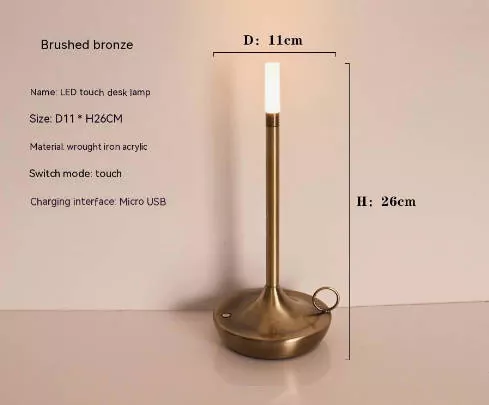
Rechargeable lamp, like any electronic device, come with their own set of potential risks and safety considerations.
Here are eight points to keep in mind when purchasing rechargeable lamps:
1.Battery Safety:
Rechargeable lamps use batteries which pose the potential dangers of overheating, leaking and explosion if misused improperly.
For your own safety it is vital that you follow manufacturer recommendations for charging and storage in order to minimize these risks.
2.Charging Safety:
Overcharging rechargeable batteries can lead to overheating and present a potential fire risk.
Always use the recommended charger from your manufacturer, and avoid leaving your lamp plugged in for extended periods when not in use.
3.Quality of Components:
Rechargeable lamp that use subpar components may increase your risk of malfunction and failure,
so choose lamps from reputable manufacturers who have established themselves in terms of quality and safety.
4.Overheating:
Rechargeable lamps equipped with high-intensity LED bulbs may generate excessive heat during extended use, leading to overheating.

To minimize overheating, make sure there is sufficient ventilation, avoid covering the lamp while operating and ensure adequate airflow is present when in use.
5.Water Resistance:
When operating rechargeable lamps outside or in wet environments, take precaution to ensure they feature sufficient water resistance
or are designed for outdoor use to avoid electrical hazards or moisture-induced damage to prevent electrical hazards or structural failure.
6.Short Circuits:
Faulty wiring or damaged components may lead to short circuits that present a threat of electrical shock or fire, increasing your risk.
Regularly check for signs of wear on the lamp and discontinue use if any visible wires, frayed cables, or any other signs indicate potential trouble.
7.Child Safety:
Rechargeable lamp that contain small components or accessible batteries pose a choking hazard to young children,
so keep them out of reach of children and monitor their use, particularly around young ones.
8.Proper Disposal:

When disposing of rechargeable lamps at the end of their lifespan and needing disposal,
it’s vital that proper recycling or disposal procedures for electronic waste (e-waste) are observed.
Many rechargeable lamps contain hazardous components like lithium-ion batteries which should not be dumped with regular household garbage.
By considering these points and taking necessary precautions, you can reduce any associated risks when it comes to using rechargeable lamps and enjoy a safe lighting experience.

